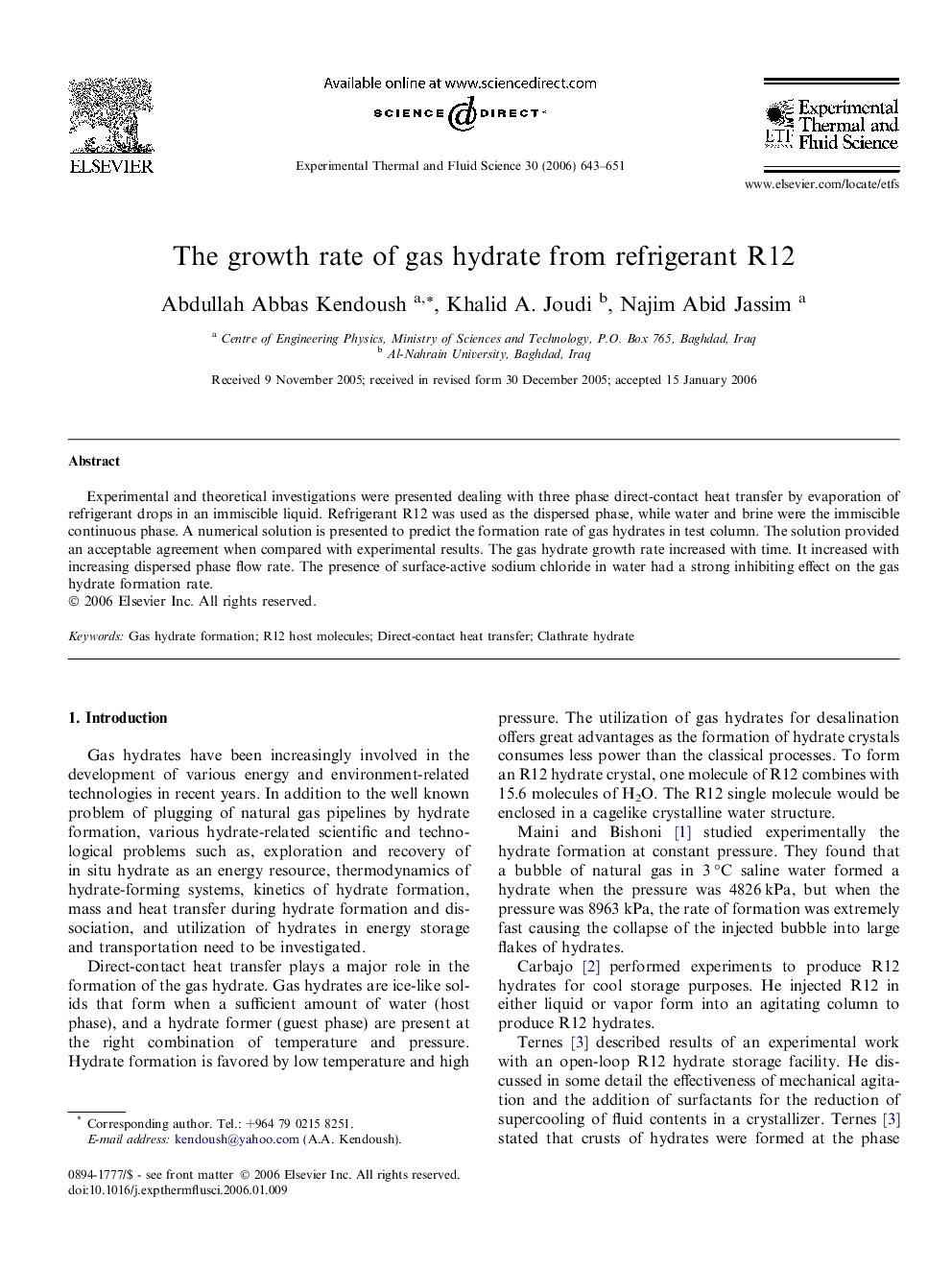| Article ID | Journal | Published Year | Pages | File Type |
|---|---|---|---|---|
| 652617 | Experimental Thermal and Fluid Science | 2006 | 9 Pages |
Abstract
Experimental and theoretical investigations were presented dealing with three phase direct-contact heat transfer by evaporation of refrigerant drops in an immiscible liquid. Refrigerant R12 was used as the dispersed phase, while water and brine were the immiscible continuous phase. A numerical solution is presented to predict the formation rate of gas hydrates in test column. The solution provided an acceptable agreement when compared with experimental results. The gas hydrate growth rate increased with time. It increased with increasing dispersed phase flow rate. The presence of surface-active sodium chloride in water had a strong inhibiting effect on the gas hydrate formation rate.
Related Topics
Physical Sciences and Engineering
Chemical Engineering
Fluid Flow and Transfer Processes
Authors
Abdullah Abbas Kendoush, Khalid A. Joudi, Najim Abid Jassim,
